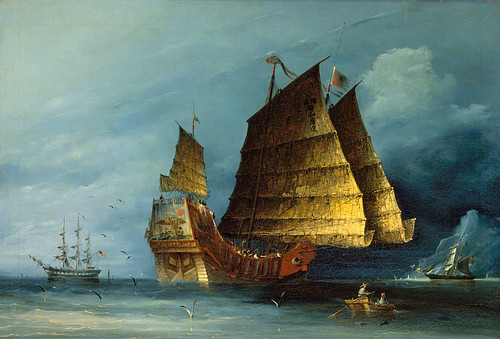One of the great early explorers. And for some reason, after his last trip China turned inward and destroyed its fleet.
The Seven Voyages of Zheng He
Admiral Zheng He (aka Cheng Ho, c. 1371-1433 CE) was a Chinese Muslim eunuch explorer who was sent by the Ming dynasty emperor Yongle (r. 1403-1424 CE) on seven diplomatic missions to increase trade and secure tribute from foreign powers. Between 1405 and 1433 CE Zheng He commanded huge fleets loaded with trade goods and high-value gifts to such far-flung places as Hormuz in the Persian Gulf and Mogadishu in East Africa. Following established sea routes but often finding himself the first ever Chinese person to land at many of his destinations, Zheng He is widely regarded as the greatest ever Chinese explorer. His travels may not have brought much success in terms of new trade or lasting tribute to the imperial court but the knowledge, ideas, and exotic goods he brought back home - from jewels to giraffes - created an interest in foreign countries and a realisation of their wealth which contributed to China's increased role in world trade in later centuries. Even if his wake was not immediately followed, Zheng He had shown the way.
One of the enduring symbols of the Ming dynasty's eagerness to extend international relations under its third emperor, Yongle, is the seven sea voyages of Zheng He. Yongle's predecessors had been cautious to the point of isolationism when it came to foreign affairs, largely out of fear of military conquest by neighbouring peoples, especially the Mongols. More secure on his imperial throne, and having grabbed it in the first place after a three-year civil war, Yongle perhaps sought some international legitimacy for his position as emperor.
***
Many of the vessels, built at the shipyards of Nanjing, were equipped with such innovations as water-tight compartments, sternpost rudders, magnetic compasses and paper charts and maps. The ships were packed with fresh water, food supplies, and Chinese luxury goods intended to woo foreign rulers into displaying their appreciation of the Ming dynasty's obvious wealth and power by sending back to China their own riches in tribute. Goods shipped out included silk, tea, painted scrolls, gold and silver objects, textiles, carved and manufactured goods, and fine Ming porcelain. There was space, too, for a huge number of personnel: estimates range from 20,000 up to 32,000 expedition members on the first voyage. These included diplomats, medical officers, astrologers, ship's crews, and military personnel which, along with canons, bombs, and rockets, ensured the expedition could ably defend itself wherever it ventured.
The Seven Voyages of Zheng He
Vmenkov (CC BY)


 The History Room
The History Room



 Reply With Quote
Reply With Quote